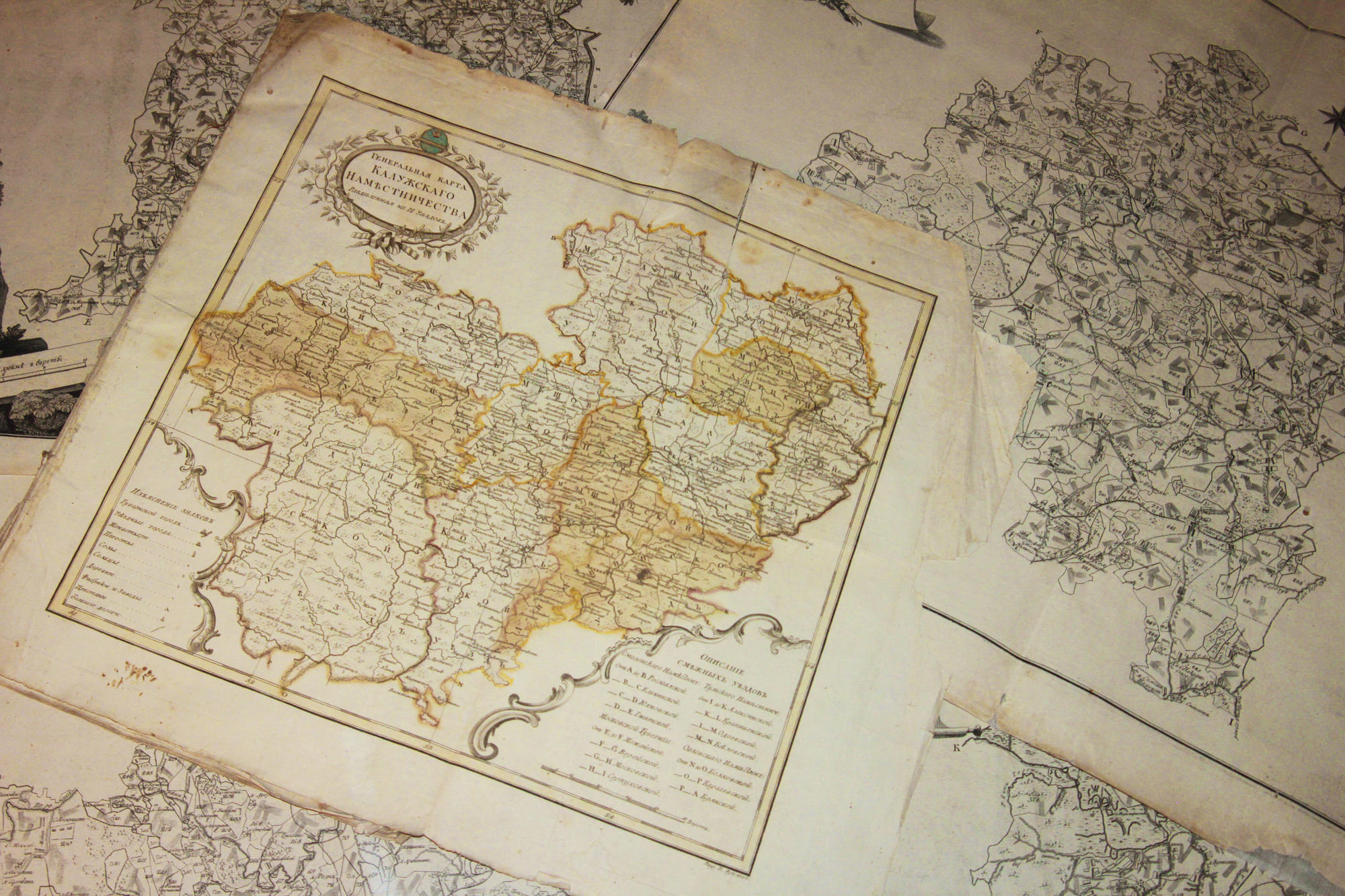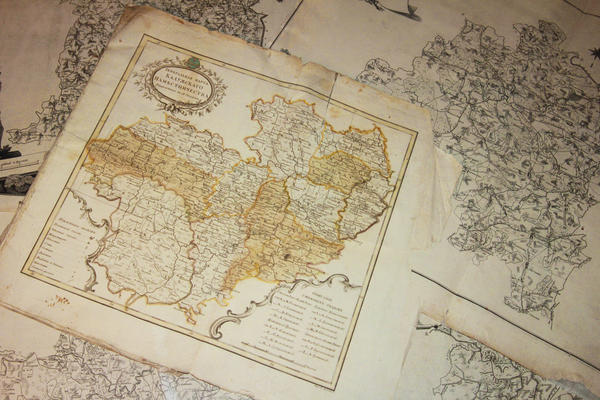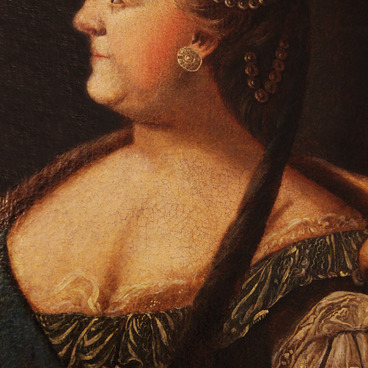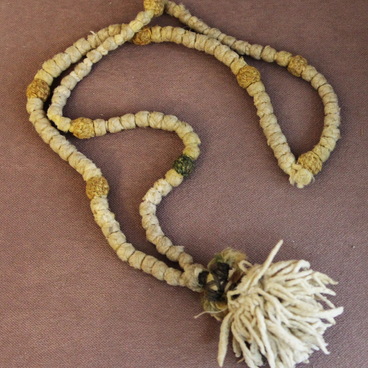In 1765, Empress Catherine II ordered to conduct a survey of all the lands of the Russian Empire – i.e. to establish the exact boundaries of all its possessions. The reform was carried out under the motto ‘Everyone at their own place’, which was invented by the empress herself and called for the mandatory production of topographic (cadastral) plans for each land tenure.
In the Kaluga Governorate, General Land Surveying was carried out in 1777. Five years later, based on its results, in St. Petersburg was compiled and released a detailed Atlas of Kaluga Namestnichestvo. It collected numerous maps of the area, as well as various economic and geographical notes and lists of Kaluga landowners. Over time, the Atlas became a valuable historical source for Kaluga scholars and ethnographers.
When compiling cadastral plans for the governorate, they usually studied the state of its economy. On the basis of such research, Pyotr Soymonov, an honorary member of the Petersburg Academy of Sciences, published a large-scale work titled as Topographic Description of Kaluga Namestnichestvo. Soymonov told accurately and in detail about the structure of the governorate at the end of the 18th century: its settlements, uyezds, natural resources, and also paid great attention to the life and activities of the Kaluga people.
For example, he wrote about them the following:
‘Some trade in Poland’s cities and towns, taking there nankeen (first silk and then cotton fabric made in China) and then tea, sugar, pepper, star anise, raw ginger, sandalwood (spices), alums (minerals), food paper, canvases, various fur products, Moscow silk scarves, sashes (belts), and silk, priced from 30,000 to 50,000 roubles.
Other merchants and petty bourgeois of this town practice different crafts: they beat and bind hemp (fibres of hemp stems) in this town and in St. Petersburg, they dress tow (coarse, tangled fibre), slub ropes in factories and at home, spun on spinning-wheels yarn from hemp, which is practiced for the most part by women; they work as masons and plasterers, they are hired as shopwalkers (sellers in other people’s shops) and estate managers (a landowner’s employee). Rural residents practice arable farming. In their best years, they produce grain four times as much, sometimes even more, as is needed for their sustenance’.
In the Kaluga Governorate, General Land Surveying was carried out in 1777. Five years later, based on its results, in St. Petersburg was compiled and released a detailed Atlas of Kaluga Namestnichestvo. It collected numerous maps of the area, as well as various economic and geographical notes and lists of Kaluga landowners. Over time, the Atlas became a valuable historical source for Kaluga scholars and ethnographers.
When compiling cadastral plans for the governorate, they usually studied the state of its economy. On the basis of such research, Pyotr Soymonov, an honorary member of the Petersburg Academy of Sciences, published a large-scale work titled as Topographic Description of Kaluga Namestnichestvo. Soymonov told accurately and in detail about the structure of the governorate at the end of the 18th century: its settlements, uyezds, natural resources, and also paid great attention to the life and activities of the Kaluga people.
For example, he wrote about them the following:
‘Some trade in Poland’s cities and towns, taking there nankeen (first silk and then cotton fabric made in China) and then tea, sugar, pepper, star anise, raw ginger, sandalwood (spices), alums (minerals), food paper, canvases, various fur products, Moscow silk scarves, sashes (belts), and silk, priced from 30,000 to 50,000 roubles.
Other merchants and petty bourgeois of this town practice different crafts: they beat and bind hemp (fibres of hemp stems) in this town and in St. Petersburg, they dress tow (coarse, tangled fibre), slub ropes in factories and at home, spun on spinning-wheels yarn from hemp, which is practiced for the most part by women; they work as masons and plasterers, they are hired as shopwalkers (sellers in other people’s shops) and estate managers (a landowner’s employee). Rural residents practice arable farming. In their best years, they produce grain four times as much, sometimes even more, as is needed for their sustenance’.



